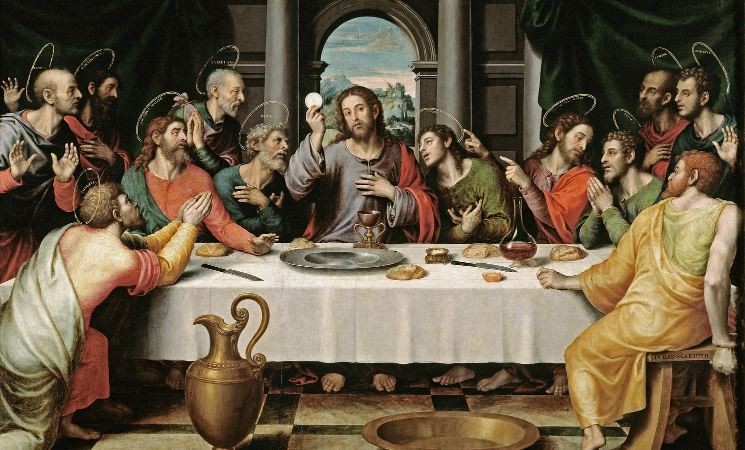
Christianity, like Islam, is a major world religion with a rich history of theological diversity and denominational divisions. Over the centuries, Christianity has splintered into numerous sects, denominations, and branches, each with its own beliefs, practices, and interpretations of the Christian faith. In this detailed article, we will explore the division of Christianity into various sects, the historical context in which these divisions occurred, and the key differences among them.
The Division of Christianity:
Christianity began as a small Jewish sect in the 1st century CE, following the teachings of Jesus Christ. However, it soon spread across the Roman Empire and beyond, leading to diverse interpretations of Christian doctrine. The division of Christianity into different sects can be traced back to various historical and theological factors:
1. The Great Schism (1054 CE):
One of the most significant early divisions in Christianity occurred in 1054 CE, resulting in the split between the Eastern Orthodox Church and the Roman Catholic Church. This event, known as the Great Schism, was primarily driven by theological disagreements and cultural differences between the Eastern and Western branches of Christianity. Key issues included the authority of the Pope, the use of icons in worship (iconoclasm), and differences in liturgical practices.
2. Protestant Reformation (16th Century):
The Protestant Reformation of the 16th century was a pivotal moment in Christian history. Led by figures like Martin Luther, John Calvin, and Huldrych Zwingli, the reformers challenged the practices and teachings of the Roman Catholic Church. The Reformation resulted in the emergence of various Protestant denominations, each with its own theological distinctives. Lutheranism, Calvinism, Anglicanism, and the Anabaptist movement were among the prominent branches of Protestantism.
3. Religious Wars and Colonialism:
Religious conflicts and the spread of Christianity through European colonialism led to further divisions. For instance, the Thirty Years' War (1618-1648) in Europe was a devastating conflict driven in part by religious differences between Catholics and Protestants. Additionally, missionary efforts during the age of exploration and colonization contributed to the establishment of Christian denominations in different parts of the world.
Major Christian Sects and Denominations:
While there are numerous Christian denominations and sects, several major branches stand out due to their historical significance and impact on the Christian world. Here, we explore some of these major Christian sects and their key differences:
1. Roman Catholicism:
Roman Catholicism is the largest Christian denomination globally. It recognizes the authority of the Pope and adheres to traditional liturgical practices. Catholic doctrine includes beliefs in the Eucharist (transubstantiation), the veneration of saints, and the use of sacraments for salvation.
2. Eastern Orthodoxy:
The Eastern Orthodox Church split from Roman Catholicism in the Great Schism of 1054. It has its own hierarchical structure, liturgical traditions, and theological emphases. The Eastern Orthodox Church emphasizes theosis (divinization) and the use of icons in worship.
3. Protestantism:
Protestantism encompasses a wide range of denominations, each with its own unique beliefs and practices. Common Protestant theological tenets include sola scriptura (Scripture alone as the ultimate authority), salvation by faith alone, and the priesthood of all believers. Major Protestant branches include Lutheranism, Calvinism, Anglicanism, Methodism, and Baptist traditions.
4. Anglicanism:
Anglicanism emerged from the English Reformation and is known for its "via media" or middle way approach. The Church of England is the mother church of Anglicanism. Anglicans have diverse beliefs, ranging from High Church (more Catholic-like) to Low Church (more Protestant-like).
5. Evangelicalism:
Evangelicalism is a movement within Protestantism that emphasizes personal conversion, the authority of the Bible, and evangelism. Evangelical denominations include Baptists, Pentecostals, and various non-denominational churches.
6. Oriental Orthodoxy:
Oriental Orthodoxy includes ancient Christian traditions that split from the Eastern Orthodox Church due to theological disputes over the nature of Christ. These churches include the Coptic Orthodox Church, the Ethiopian Orthodox Tewahedo Church, and others.
7. Restorationism:
Restorationist movements, such as the Latter-day Saint movement (Mormonism) and the Jehovah's Witnesses, emerged in the 19th century with claims of restoring the true Christian faith through new revelations or interpretations of scripture.
8. Nontrinitarian Sects:
Some Christian sects, like Unitarianism, reject the traditional Trinitarian doctrine and emphasize the oneness of God. These major Christian sects and denominations often differ in their beliefs about the nature of God, the role of the church, the authority of scripture, and various theological nuances. Additionally, cultural and regional variations can further shape the practices and interpretations of each group.
Despite these theological and denominational differences, Christians across sects share core beliefs in the divinity of Jesus Christ, the importance of the Bible, and the central message of love, compassion, and salvation through faith. While divisions exist, many Christians work towards greater unity and dialogue among different Christian traditions in the spirit of ecumenism.
The Diversity of Islamic Sects: Understanding the 73 Firka and Major Sects in Islam
Pitru Paksha 2023: Commemorating Ancestors - Know the Significance of Shradh Paksha